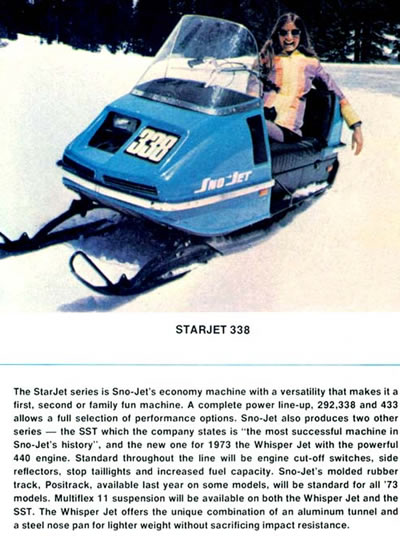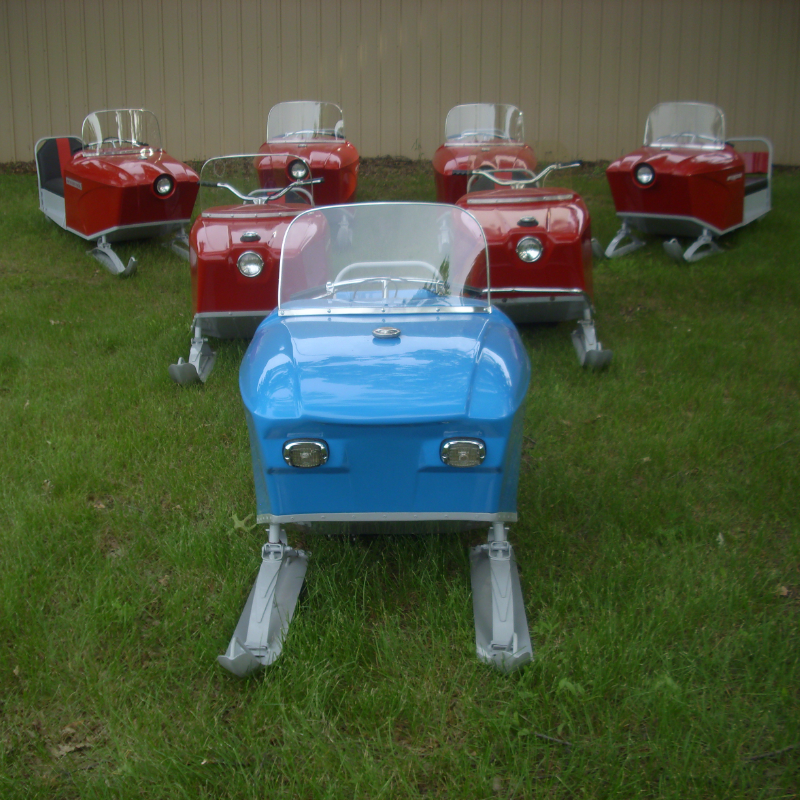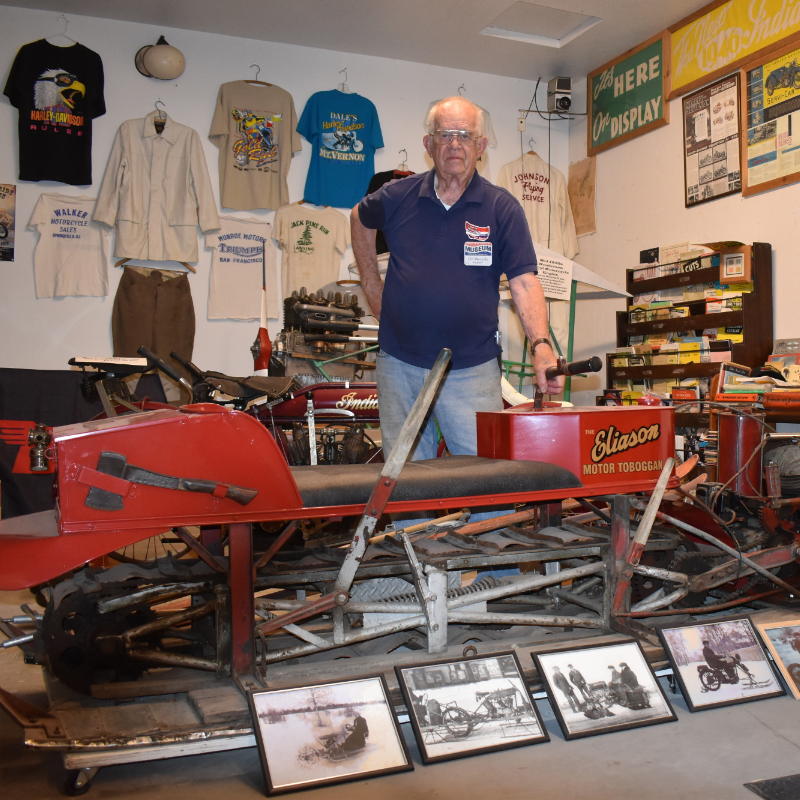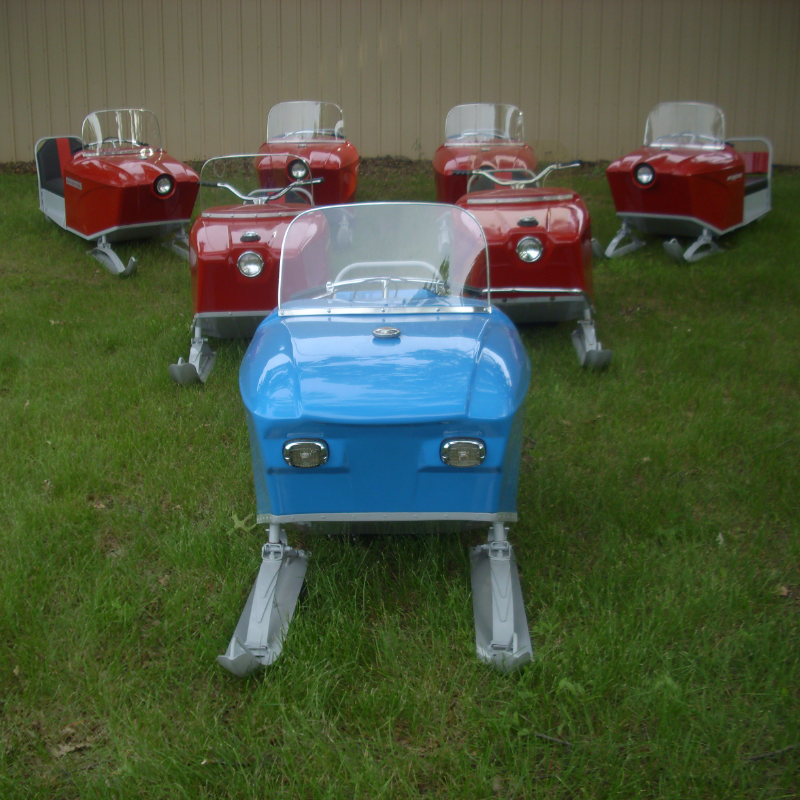Here's another one of Ron Berthelette's vintage snowmobiles that he has listed for sale on Facebook. This vintage Sno-Jet 338 model is a bit of scratch and dent sled. Again, Ron welcomes enquiries from serious collectors who would like to purchase this model or any number of vintage sleds he has recently listed.
According to an early Sno-Jet brochure, this model was an economy machine with a versatility that made it a first, second or family fun machine. A complete power line-up, the 292, 338 and 433 cc models allowed a full selection of performance options. Standard throughout the line-up were engine cut-off switches, side reflectors, stop tail lights and increased fuel capacity. Sno-Jet’s molded rubber track—Positrack—was available on the 1973 models as well, as a standard feature.

Here’s some insight into Sno-Jet’s engines of the day: “Sno-Jet had formed a business deal with German engine manufacturer Hirth in the earliest days of production to supply them with two-stroke-engines. Hirth wished to directly compete with their main Austrian competitor, Rotax, for the rapidly expanding North American snowmobile market, and as a result offered their engines to Sno-Jet for a cheaper price than Rotax (whose primary consumer was Bombardier). This quickly made Sno-Jet the largest consumer of Hirth engines, and had the benefit of keeping production costs of Sno-Jets low, thus making them more affordable to consumers. Hirth engines were also quite reliable, which added even more credibility to the good reputation the Sno-Jet company was quickly building. Despite their success with brands like Sno-Jet, Hirth soon wished to stop producing engines for snowmobiles, citing their growing dependence on the overseas market as the main reason. The OPEC Oil Crisis of 1973 only strengthened their resolve to leave the market, and by 1974 they had produced their last two-cycle snowmobile engine. The Hirth engine company continues to manufacture two-stroke engines to this day, however solely for helicopter and light aircraft applications.
Needing another engine manufacturer to turn to, Sno-Jet chose Yamaha, which at the time had already seen many years as a successful motorcycle manufacturer but was just expanding into snowmobiling. In 1970, only two years after Yamaha produced their first snowmobile, Sno-Jet began to offer models powered by Yamaha engines instead of Hirth. By 1973 Hirth engines were phased out completely, except for a single model in 1974 which used a small surplus supply. In 1970 Sno-Jet also offered two models using a single-cylinder 340 cc engine.
Sno-Jets were produced from 1965 until 1980 by Quebec-based Sno-Jet Industries, eventually becoming a division of Kawasaki Motors.
Got an old sled story? Photos? Share them with us at [email protected]







